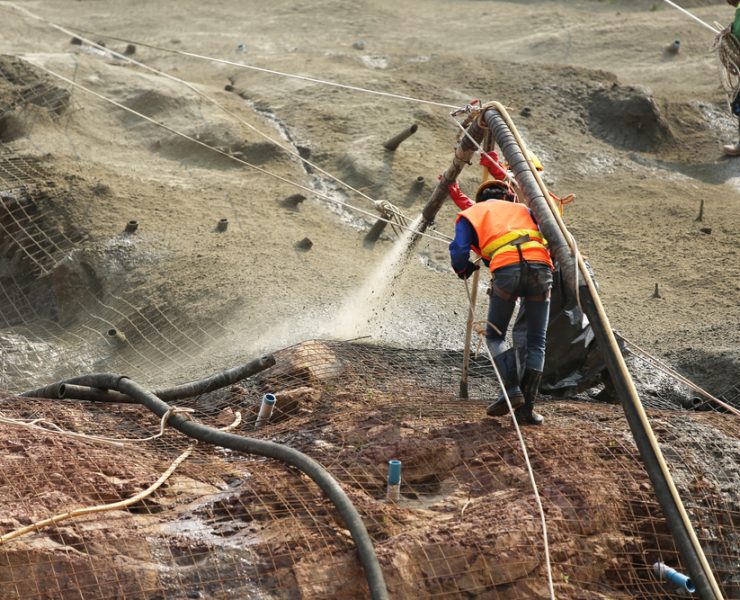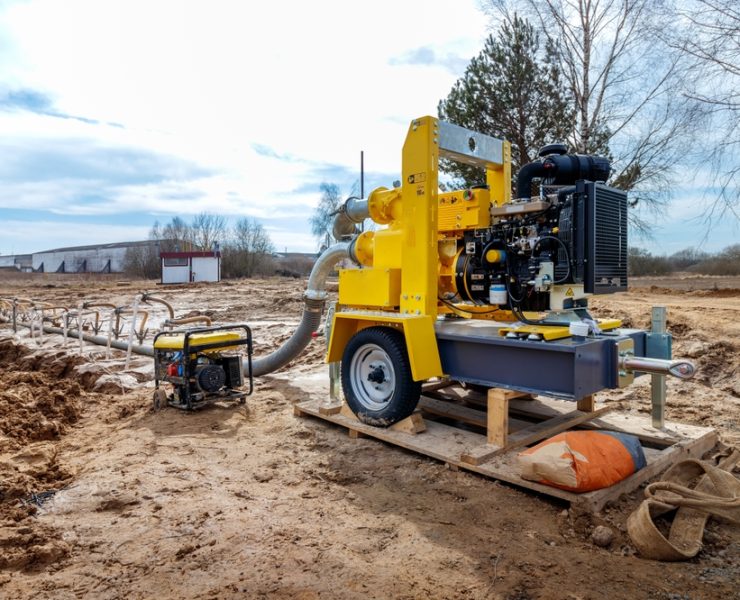Drilling in and Near Embankment Dams and Foundations – Part I
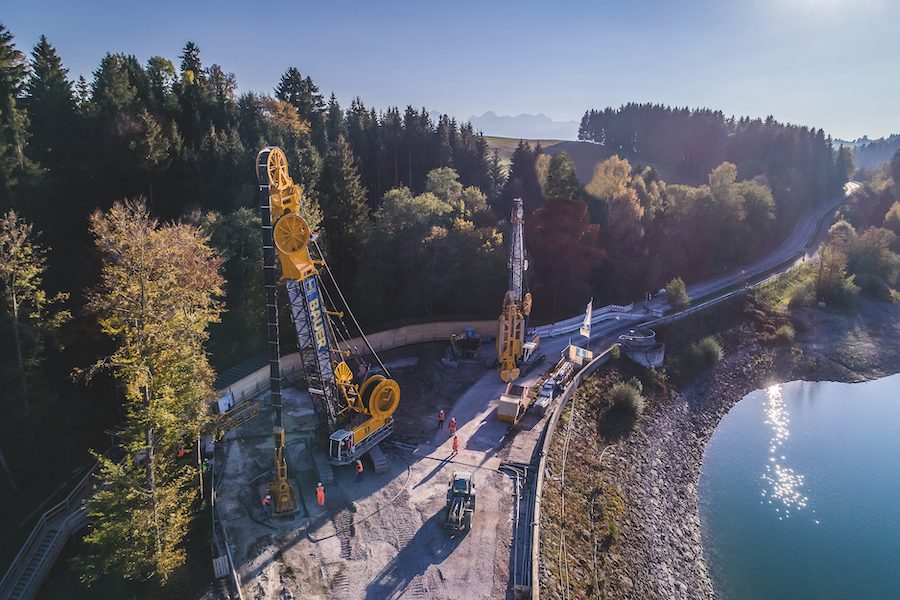
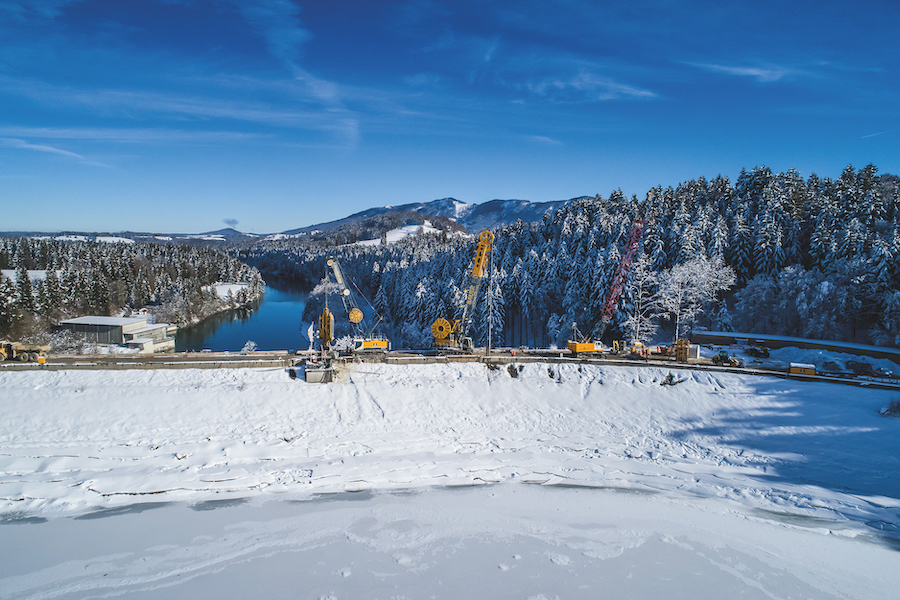
View the complete article here.
When drilling near embankment dams and foundations, a focused emphasis needs to be placed on preventing damage to the foundations, embankment, and structures in the area. Drilling-related activities can lead to a range of problems, including hydraulic fracturing, erosion, drain/filter contamination, heave, and more.
The overarching goal is to “do no harm.” Before the work commences, the plans need to be presented and accepted by the Federal Energy Regulatory Commission Division of Dam Safety and Inspections (FERC). This presentation must show that the need for drilling data outweighs the potential structural damage that might occur. These guidelines apply when drilling is done in proximity to earthen water retaining structures or an embankment dam – any structure that holds back water or provides direct support to a feature that holds back water.
This article is the first of two parts, exploring the applications and principles of best practices for any activity that could affect the structural integrity of the dam or foundation, including drilling holes, test trenches/pits, excavation, concrete demolition, drain cleaning, penetrations, utility installation, grouting, removal of vegetation, and more.
Potential Dangers of Improper Drilling Practices
The drilling process can pose a real danger for structural damage when specific guidelines are not followed. Conditions can be created that cause internal erosion, eventually leading to dam failure at times.
These dangers can be caused by a variety of problems, including:
- Improper planning
- Incorrect drilling techniques
- Using the wrong drilling equipment
- Failing to have contingency plans
- Lack of knowledgeable field staff on-site
Following the “rules of thumb” for safe drilling practices minimizes the risk of structural damage.
Considerations for Dams with Seepage Problems
If a dam has seepage problems, then an investigation needs to be done to evaluate the location, condition, and other elements contributing to the seepage. At a FEMA-sponsored workshop in 2000, a group of experts compiled a list of recommendations regarding the investigation and monitoring of seepage concerns. These are some of the tips that should be followed to minimize risk and protect the structure of the dam and foundation:
- Drilling in the core of an existing embankment should only be done when absolutely necessary. If needed, planned precautions need to be in place, and auger (dry) drilling methods should be used.
- When a dam is filled with water, contingency plans need to be prepared when test pitting or drilling is done. These contingencies might include a stockpiling of weighted filter material that can be used if a seepage incident occurs.
- Unless there are compelling reasons to use piezometers, these tools should not be used in an embankment core.
- The limitations of piezometers need to be recognized, and this data should only be used along with other information. For example, it is important also to evaluate seepage locations and rates so the conditions can be correctly diagnosed.
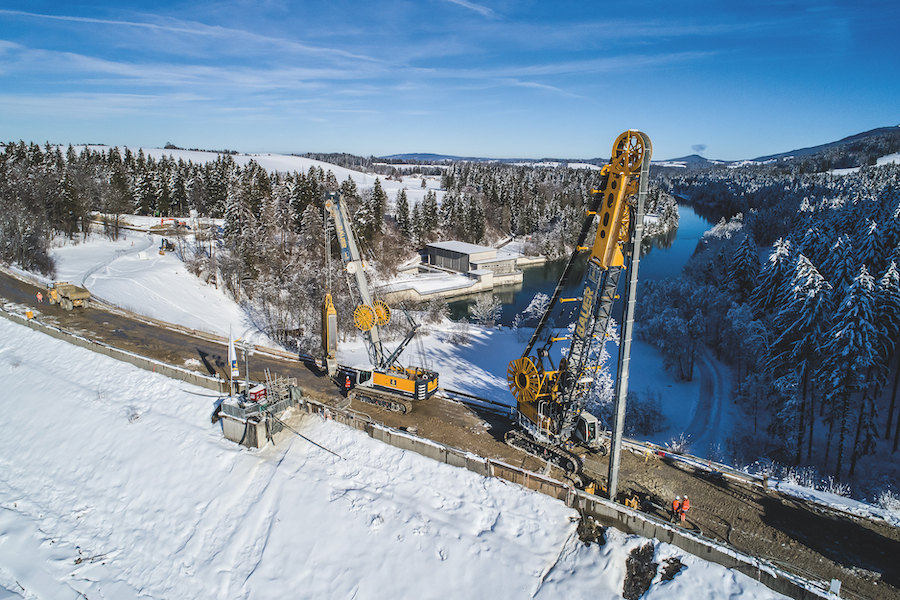
Planning an Investigation Program
When an investigation program is planned, the data needs to support the justification for the cost of the project as well as the potential structural risk. The consequences evaluated should include the likelihood of worsening conditions and the probability of risk. If future remediation is needed, what will be the cost of the repair work?
If the collected data justifies the project, then an exploration team is formed to evaluate components that address the points of concern. This team should consist of geologists, engineers, and others that have applicable experience and knowledge in field exploration programs.
Available records should be searched thoroughly, and might include:
- Geologic records (reports, logs, and mapping) from previous construction and investigations
- Project files from the FERC and owner
- Supporting Technical Information (STI)
- Photographs and other records of construction and design
- Field office project records
- Consultant files
- Archived records
This information can help the exploration team evaluate the important points about the project:
- What is the purpose of the investigation?
- Anticipate exploration costs
- Required sample size and type
- Acceptable methods for investigation and drilling
- Drilling requirements, including inclination, diameter, and depth
- The materials that will be drilled and sampled
- Accessibility for utilities, including underground and surface cables
- Location of pipes, drainage features, blankets, and seepage cutoff walls
- Drilling hazards
- Dam foundation geometry
- Requirements for instrumentation
The investigation schedule needs to accommodate the time necessary for obtaining permits, clearances, and traffic control plans.
When developing and implementing an exploration program, there are common drilling hazards that must be evaluated and mitigated:
- Hydraulic Fracturing: When excessive pressure occurs from drilling fluid, air, water, or grout, then the embankment and foundation materials can be fractured. This hydraulic fracturing can cause blowouts into nearby borings, loss of fluid circulation, or seepage of drilling fluids on the embankment face. A fracture can occur in a variety of materials, including bedrock, cohesionless materials, and cohesive materials. Certain conditions and embankment locations have a higher potential for hydraulic fracturing because zones of low confining stress are created. Sometimes, it can be helpful to calculate static stresses (such as the embankment seepage forces) to evaluate the maximum drilling fluid pressures that can be applied.
- Artesian Conditions: When higher fluid pressures are present at depth or the ground surface, then it might be necessary to control artesian pressures by installing a surface casing. This step should be considered when it is anticipated that the pressures will be significant and/or possibly derived from the head of the reservoir directly. Specific conditions at the site should be evaluated on a case-by-case basis and should include details such as the amount of surface casing and the height of the drill pad.
- Erosion: The problem of erosion is possible when the drilling fluids are introduced into cracks. These cracks might be existing, or they may form due to hydraulic fracturing. The introduction of drilling fluids can increase the potential for internal erosion. While it is common for subsurface cracks to develop as the result of differential settlement, the highest areas of risk are in those that have low confining stress and hydraulic fractures can occur.
- Filter/Drainage Contamination: Another potential hazard of drilling fluid is the contamination risk of the internal draining features. When the sealing grout or drill fluid moves through the filter materials or drain, it can result in the formation of a clog. It is best to avoid drilling near seepage blankets and drains. When it is justified to penetrate the drain, specific provisions need to be in place to minimize the risk of contamination. Additionally, it is important to protect drainage features when the backfilling is occurring.
- Disturbances of Heave and Sample: If undisturbed sampling or in-situ tests are needed in the drilling program, then the use of drilling fluid might be required to offset the confining stress. In certain cases, failure to prevent heave of granular soils below the water or stress relief can affect the in-situ test results and cause invalid data. As a result, the interpretation of the subsurface conditions is invalid.
Before any drilling activity is initiated, these potential drilling hazards should always be considered by the exploration team. Then, the drilling plans can be developed to mitigate potential problems so the hazards can be avoided whenever possible. If it is not possible to avoid the hazards, then the risk needs to be evaluated so mitigation steps can be implemented in the drilling plan.

Drilling Methods for Geotechnical Investigations
When geotechnical investigations are performed, numerous drilling methods can be used. While details of these drilling methods are not going to be covered in this article, an overview of the nine major drilling methods is listed below. These drilling methods are listed in order of preference, with the first three as the preferred methods (based on the best outcomes for embankment dam projects).
- Hollow Stem Auger: This method can be used without restriction for drilling in the core, as well as in most other areas of an embankment dam.
- Sonic Drilling: Also known as vibratory drilling, sonic drilling is a preferred method due to the rapid speed of drilling and the lack of drill fluid.
- Cable Tool or Churn Drilling: Minor restrictions are needed for this type of preferred drilling. This method is an older technique that is infrequently used.
Other forms of major drilling methods might be considered. But all of these drilling techniques must have FERC approval for embankment core drilling. These approaches are not considered “preferred methods” for drilling in embankment dams. But each site and project can be considered on a case-by-case basis, depending on the conditions and soil:
- Dual Rotating Drilling
- Fluid Rotary Drilling
- Penetration Testing/Becker Drilling
- Wire Line and Casing Advancer
- Drill Through/Drive Casing Advancer
- Air Rotary
Keep in mind that air drilling methods are known for causing fractures because of the high pressures that are required. If there is potential that the core of an embankment dam will be encountered, drilling with air should never be considered in the drilling plan.
Minimizing the Risk of Damage When Using Drilling Fluids
Dam drilling programs should be designed to minimize the need for drilling fluid, such as water, gas, air, mud, slurries, polymers, and any other materials that could pressurize the borehole soils. Dry drilling (with augers or sonic drilling) should be the method of choice when the objectives can be achieved without fluids.
If drilling fluids are used, then general procedures should always be followed:
- Design and size the tools to reduce the risk of return flow clogging
- Don’t use methods that require the cuttings to flow through a small annulus between the casing or tools
- Fluid discharge should always point upward, not lateral or downward
- Pressure changes in the drill hold can be avoided by raising and lowering the drill tools slowly
- Avoid crowding the bit by slowing the drilling feed rate, which minimizes the chance of fracturing
- Continuous monitoring needs to be done to evaluate the drilling media properties, pressure, and return
- A pressure-controlled release should be on the pump when media circulation is required
- Sometimes the risk of hydraulic fracturing can be reduced by advancing the casing ahead of the drilling bit
- When washing the hole, great care needs to be taken
- The casing should never be jetted. Instead, it should be driven or pushed (except in unique cases where the casing precedes the drilling)
- When rock requires core drilling, the foundation or embankment soil above the rock should be isolated and protected from circulating drilling fluid. Bedrock fractures need to be considered.
- When drilling operations are paused or suspended for meals, breaks, weekend/overnight, the borehole should not be left in a critical state that could lead to embankment damage
Proper planning and execution are essential when drilling in and near embankment dams and foundations. Following these recommendations, as well as additional tips that will follow in the next article, will minimize damage and reduce the risk of common problems.
Sources:
Federal Energy Regulatory Commission Division of Dam Safety and Inspections
View the complete article here.
What will happen if specific guidelines are not followed while drilling in and near embankment dams and foundations?
The drilling process can pose a real danger for structural damage when specific guidelines are not followed. Conditions can be created that cause internal erosion, eventually leading to dam failure at times.
What are the common drilling hazards?
The common drilling hazards when developing and implementing an exploration program: Hydraulic Fracturing - Artesian Conditions - Erosion - Filter/Drainage Contamination - Disturbances of Heave and Sample















